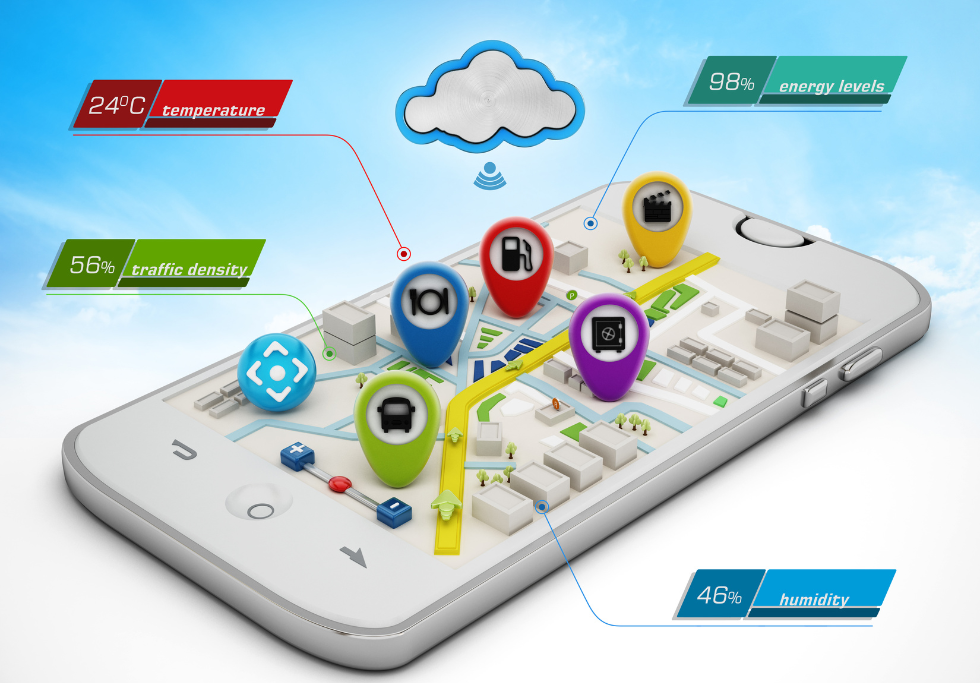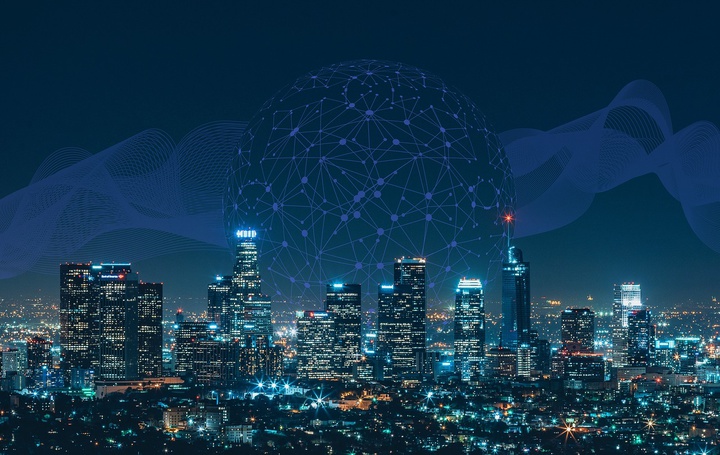
In the realm of smart city development, crowdsourcing can help identify new and creative ways to tackle a range of challenges, from reducing traffic congestion and improving public transportation, to enhancing energy efficiency and incorporating sustainable design principles.
By leveraging the power of crowdsourcing, municipal governments can take a more holistic approach to urban planning, ensuring that the needs and perspectives of a diverse range of stakeholders are taken into account.

What is an Innovation Challenge?
An innovation challenge is a structured and often competitive process designed to generate and implement new ideas, technologies, or approaches to solve specific problems or meet particular goals. It’s a way to crowdsource innovative solutions from a diverse range of participants, including individuals, teams, companies, and public organizations, and can be applied across a range of industries and sectors.
A challenge typically entails identifying a specific problem or opportunity and the development of a clear and concise problem statement. Participants are then invited to submit their innovative concepts and ideas, often through an open call for proposals or a structured application process. The proposals are then evaluated against a set of criteria, such as feasibility, scalability, impact, and novelty, and the most promising solutions are selected.
Innovation challenges can be organized by companies, governments, nonprofits, or other groups and can be used to address a wide range of difficulties, from social and environmental issues to business and technology conundrums. The benefits of innovation challenges include access to a wider pool of innovative ideas, improved collaboration, increased engagement and motivation, and the potential to drive positive change and impact.
You’re probably familiar with “smart” houses and other “smart” devices, but have you ever considered how this technology could be utilized in an entire metropolitan area? Let’s look at where the concept of smart cities and the contribution of crowdsourcing both come into play.
What Is a Smart City?
The term “smart city” refers to an urban region that makes use of communication and information technology, the Internet of Things (IoT), and many other sensors and gadgets in order to gather data and properly manage resources based on such data. Garbage, traffic, public transit, schools, and other city operations are examples of such resources. There are a number of large cities throughout the world, including Amsterdam, New York City, and Taipei, that have already integrated some kind of smart technology into their municipal infrastructure.
Brand-new smart cities are being built in various locations around the world, as many cities are now realizing the potential benefits of adopting smart technologies to improve the quality of life for their citizens. Here are just a few examples of them:
- Songdo, South Korea: Songdo is a new smart city built from scratch on reclaimed land near Incheon, South Korea. The city is equipped with cutting-edge technologies, including a pneumatic waste disposal system, underground water management, and smart traffic controls.
- Neom, Saudi Arabia: Neom is a proposed smart city currently under construction in Saudi Arabia. The city aims to be entirely powered by renewable energy and will be home to advanced transport systems, high-speed internet connectivity, and innovative urban planning.
- Masdar City, UAE: Masdar City is a smart city located near Abu Dhabi in the United Arab Emirates. The city is designed to be powered entirely by renewable energy and features a range of smart technologies, such as driverless cars, energy-efficient buildings, and waste recycling systems.
- Woven City, Japan: The Woven City is a 175-acre smart city project being built by Japanese automaker Toyota in Susono, Japan. Designed to be built from sustainable materials and featuring innovative autonomous transportation solutions, the city will soon house some 2,000 residents.
How Does Crowdsourcing Fit Into Smart Cities?
So, where does the concept of crowdsourcing come into play? Enterprises, innovation centers, and municipal governments have utilized the crowdsourcing platform that HeroX provides in order to search for new ideas centered on certain aspects of the development of smart cities.
For example, the communications giant Deutsche Telekom held an innovation challenge to encourage the development of digital services that could assist in making smart cities more livable for their residents. They concentrated mostly on those inhabitants struggling with a variety of difficulties (e.g., elderly populations and/or residents with a physical disability).
The winning solutions to Deutsche Telekom’s innovation challenge featured artificial intelligence and GPS bus tracking to accurately predict arrival times and plan bus resource allocation, remote road monitoring to detect potholes and other forms of street damage in real-time, and a smart city assistant to assist newcomers in navigating their new home in any language.
Additional Smart Cities Innovation Challenges
Other examples of recent smart city innovation challenges include:
1. GigabitDCx
The GigabitDCx innovation challenge was a competition launched by the Washington D.C. government to encourage the leveraging of high-speed internet access to solve local problems and improve the quality of life for residents.
The competition was focused on three main areas: public Wi-Fi and broadband access, connected communities, and digital inclusion. The goal of the challenge was to encourage the development of solutions that increase internet access and digital literacy for residents, create new opportunities for economic growth, and promote innovation in the city.
The selected finalists were awarded a $34,000 grant to pilot their solutions in the city, with the ultimate goal of scaling the solutions across the city and beyond. The competition was part of a broader effort by the city to establish Washington D.C. as one of the leaders in smart city innovation and to use technology to create a more equitable urban metropolis for all residents.
2. The Newcastle Smart Mobility Challenge
The Newcastle Smart Mobility innovation challenge was a competition launched by the city of Newcastle in New South Wales, Australia, to encourage the development of improved mobility and transport in the city.
The competition was focused on three main themes: improving air quality, reducing congestion, and promoting active travel. The aim of the challenge was to encourage the development of solutions that could help the city reduce carbon emissions, improve public health, and make transportation more efficient and accessible.
The selected finalists were awarded a grant to develop and pilot their solutions in the city. They were also provided with access to support and resources to help them scale their solutions through the urban center and beyond its borders. The competition was part of a larger effort by the city to establish Newcastle as a leader in smart city technology and to use innovation to create a more sustainable and livable city for all citizens.
3. Design for San Diego’s 2017 Civic Challenge
The Design for San Diego's 2017 civic innovation challenge was a competition launched by Design for San Diego, a nonprofit organization that focuses on improving urban design and habitat in San Diego, California. The challenge aimed to encourage the development of innovative solutions to address some of the city's most pressing issues of livability.
The 2017 challenge was focused on the theme of “Access to Opportunity,” with a particular emphasis on improving access to economic and social opportunities for low-income residents of the city. Participants were asked to address the challenge theme by proposing innovative solutions in one of three categories: Housing and Homelessness, Mobility and Transportation, or Workforce Development. The proposals were evaluated based on their potential impact, feasibility, sustainability, and scalability.
The selected finalists were awarded a $1,000 grant to help them develop their proposals further and were given access to mentorship and support from Design for San Diego and its partner organizations. The finalists then presented their proposals to a panel of judges, and the winning proposal was awarded a $5,000 cash prize to help them implement their solution.
How You Can Contribute
The exciting thing about smart city innovation challenges is that participants don’t need to be part of any major organization in order to start gathering ideas about how to make their community “smarter.” Innovation challenges are a fantastic strategy for getting people in your community to begin thinking about creative solutions to real problems!
Crowdsourced innovation challenges, like those facilitated by HeroX, offer a structured and often competitive process for generating and implementing new ideas to solve specific problems. This approach can lead to improved collaboration, increased engagement and motivation, and ultimately, more effective solutions.
Are you interested in utilizing crowdsourced innovative solutions but unsure where to begin? We’re here to help you! Make an appointment for a free workshop on an upcoming innovation challenge. And in the meantime, find out more about how crowdsourcing works.
References:
1. https://en.wikipedia.org/wiki/Innovation_competition
2. https://en.wikipedia.org/wiki/Crowdsourcing








